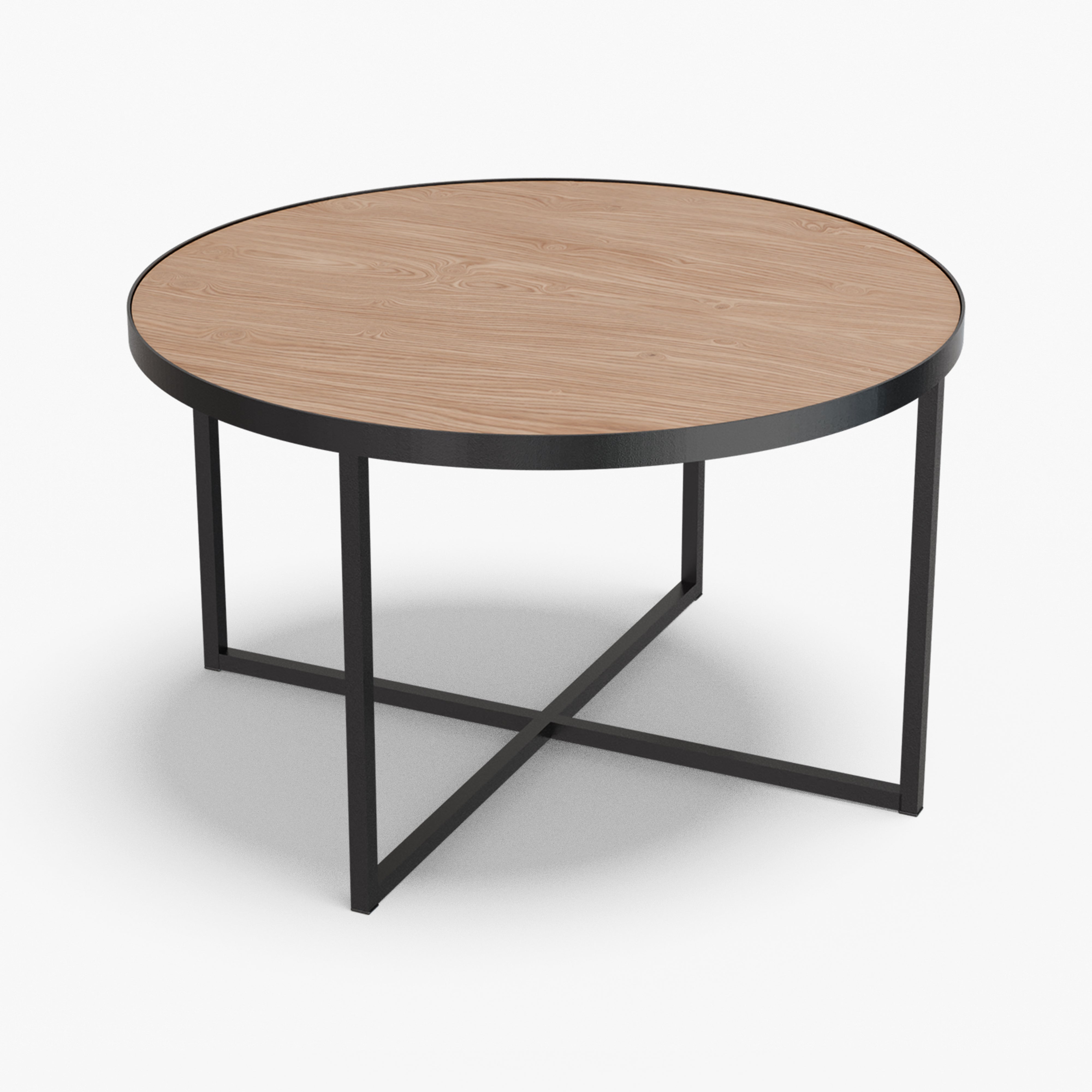Choosing a coffee table shape changes how a room feels and functions. Round reads soft and social. Rectangular reads orderly and efficient. The right choice depends on your seating layout, how people move through the space, and how you like to live day to day. Here is a flowing guide in plain English, with clear advantages and disadvantages for each shape and an honest verdict on when one is better than the other.
The key ideas in simple terms
Reach or gap is the space from the sofa front to the table edge. Aim for a comfortable reach so you can set a cup down without leaning.
Circulation is the walking lane around furniture. You want paths that feel easy and unforced.
Footprint is how much floor area the table occupies. Shape changes how that area works with your room.
How each shape changes the room
Round tables calm a space. With no corners, movement feels natural and friendly. People can slide around them and you rarely clip a shin. In tight rooms a round top often keeps the lane open while still giving you a proper landing spot. Rounds also play nicely between lounge chairs or in front of a chaise because you can rotate and nudge them without worrying about alignment.
Rectangular tables bring order. They echo the straight edge of a sofa and give you a long reach zone for remotes, books, and trays. In wide rooms or in layouts with two sofas facing each other, a rectangle anchors the conversation and makes the seating feel connected. If you love symmetrical styling with candles, stacks, and a central tray, a rectangle gives you a natural stage.
Small rooms versus large rooms
In a compact living room a round table often wins. The curved edge lets you keep a reasonable path between the sofa and other pieces even when floor space is limited. You can also cluster a round with a smaller side companion for extra surface on busy nights, then tuck the helper away.
In a generous room a rectangular table often fits the scale better. Its longer span covers more of the sofa length so the arrangement does not look empty. If the rectangle starts to feel heavy, choose a version with soft corners or slimmer legs to keep the look light.
Family life, guests, and daily habits
For households with children or frequent gathering, round is forgiving. No corners means fewer bruises and it is easier to squeeze one more person onto the rug without someone getting boxed out. Round shapes also make board games and shared snacks feel inclusive since everyone is the same distance from the center.
If your routine includes laptops, sketchbooks, and organized trays, rectangular feels practical. The straight edge supports a longer working area and makes it simple to split the surface into zones, such as one end for a lamp and books and the other for drinks and snacks.
Sofas and layouts
A single standard sofa pairs beautifully with either shape. Round brings softness and easy flow. Rectangular gives strong alignment and a crisp look.
A sectional with a chaise tends to favor round or oval shapes because corners near the chaise can be tricky to pass. The curve lets you slide by without a sidestep. If you prefer rectangular here, choose one with eased corners and keep the depth modest so the path stays open.
Two sofas facing each other usually favor rectangular. The long form ties the seating together and keeps both sides within comfortable reach. If you prefer round, use a larger diameter or a pair of rounds so the span still feels connected.
U shaped seating often works best with two rounds that overlap slightly or a rectangle softened by rounded edges. The goal is equal access from all sides without blocking movement through the center.
Style and materials
Round shapes highlight stone veining and wood grain in a way that feels organic. They suit relaxed, layered interiors and rooms that already have many right angles. Rectangular shapes complement tailored spaces, architectural lines, and low modern sofas with long seats. Metal bases and thin tops emphasize order. Chunkier wood bases warm things up.
Advantages and disadvantages
Safer edges and better flow. Easy to navigate in tight rooms. Inclusive feel during gatherings. Pairs well with lounge chairs and chaise sections.
Less linear surface for long trays or laptops. Can feel underscaled in very wide rooms unless the diameter is generous or you use two pieces.
If your priorities are safety, smooth movement, and a welcoming vibe, round simply works harder for you, especially in compact spaces or family rooms.
Longest usable surface for trays, books, and work. Strong visual alignment with sofas. Excellent at tying two facing sofas together.
Corners can pinch walkways and bruise shins. In tight rooms the footprint may feel rigid. Near a chaise the inside corner can be awkward.
If you value order, clear lines, and a larger continuous surface, rectangular delivers a tidy, efficient centerpiece, especially in wide rooms or formal seating plans.
A quick decision recipe
If your room is small, your traffic paths are tight, or you have a chaise, choose round. If your room is wide, your layout is symmetrical, or you want a longer working surface, choose rectangular. When you love qualities from both, consider a soft rectangle with eased corners or pair a main rectangle with a small round helper that can slide where you need it.
Both shapes can be right. Round gives flow, forgiveness, and an easy social energy. Rectangular gives structure, span, and clear order. Pick the one that matches your room size, your seating layout, and how you live. If you tell me your sofa length, your walkway width, and your typical use, I can suggest exact dimensions and give you a main pick with a bigger and a smaller fallback, including the pros and cons so you know exactly why one choice is better for your space.























